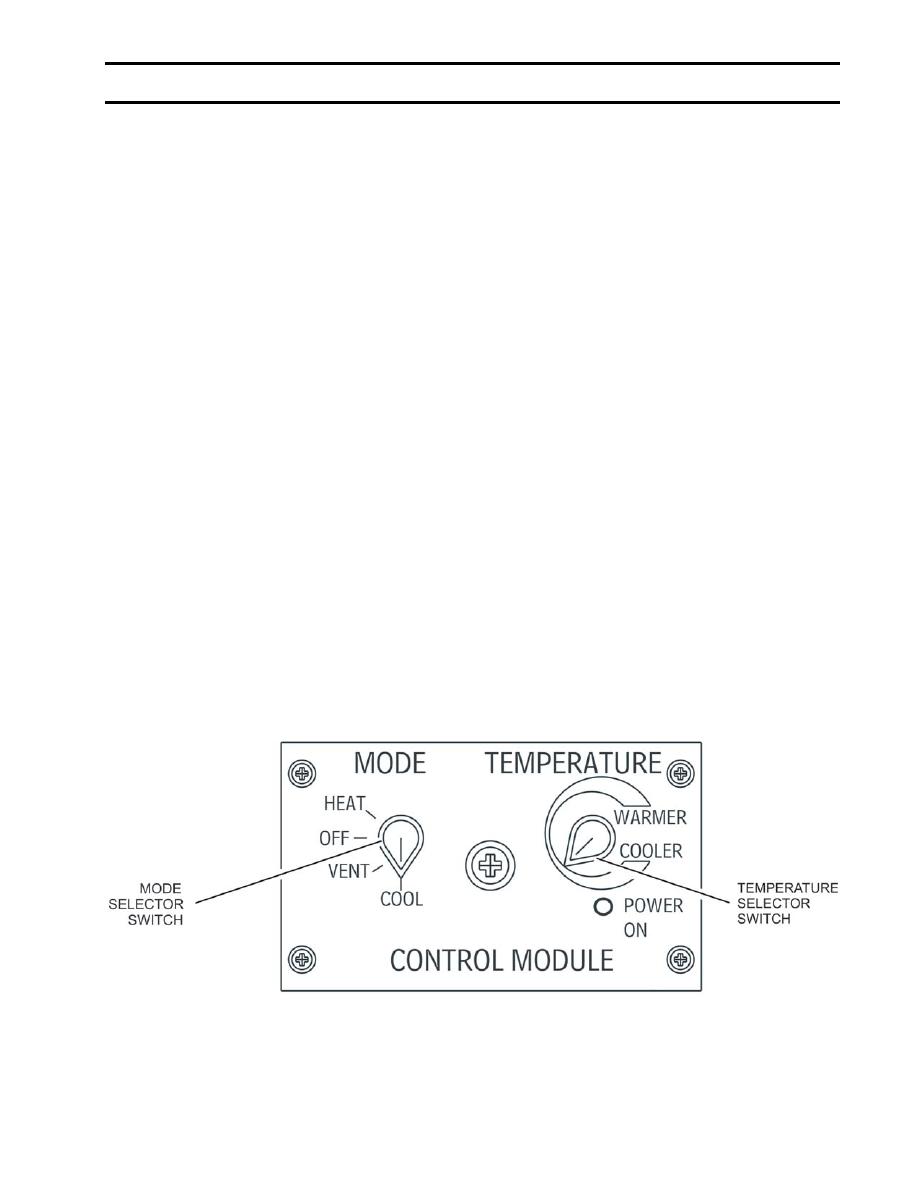 |
|||
|
|
|||
|
Page Title:
DESCRIPTION AND USE OF CONTROLS AND INDICATORS |
|
||
| ||||||||||
|
|
 TM 9-4120-430-14
AIR CONDITIONER, COMPACT, HORIZONTAL
DESCRIPTION AND USE OF CONTROLS AND INDICATORS
GENERAL
The air conditioner is a self-contained and electric powered unit that provides 18,000 BTU/HR for cooling or 13,400
BTU/HR for heating. Once started, it operates automatically due to the relationship of the components, controls and
instruments.
The air conditioner is designed for a variety of installations and for operation under a wide range of climactic conditions.
It is also designed for continuous or intermittent operation as a self-contained unit. Operators must be aware of any
peculiarities or operational limitations for their specific installation. See the appropriate shelter or system manual for
instructions peculiar to your specific installation.
The air conditioner is not equipped with a CBR filter; however, the unit could be connected to external filtering
equipment for operation under CBR environmental conditions.
OPERATOR S CONTROLS
Cooling
With the MODE SELECTOR switch (see Figure 1) in COOL position, the fan motor is energized. The fan motor runs
continuously. The temperature selector switch determines the cooling mode of unit. With the temperature selector switch
calling for compressor operation, the liquid line solenoid valve opens and closes with the electronic thermostat switch to
control the flow within the refrigerant circuit. The air conditioner is protected from current overload by a circuit breaker
mounted on the rear of the A/C unit and a thermal overload in the compressor terminal cover.
Heating
With the MODE SELECTOR switch in the HEAT position, air is blown by the evaporator fan as in cooling, but the
heating elements are energized instead of the refrigeration system.
Ventilation
Placing the MODE SELECTOR switch in the VENT position energizes the evaporator fan motor which forces air out of
the evaporator discharge louver into the room. The amount of outdoor air used for ventilation is determined by the
position of the ventilation damper door.
Figure 1. Remote Control Module
|
|
Privacy Statement - Press Release - Copyright Information. - Contact Us |